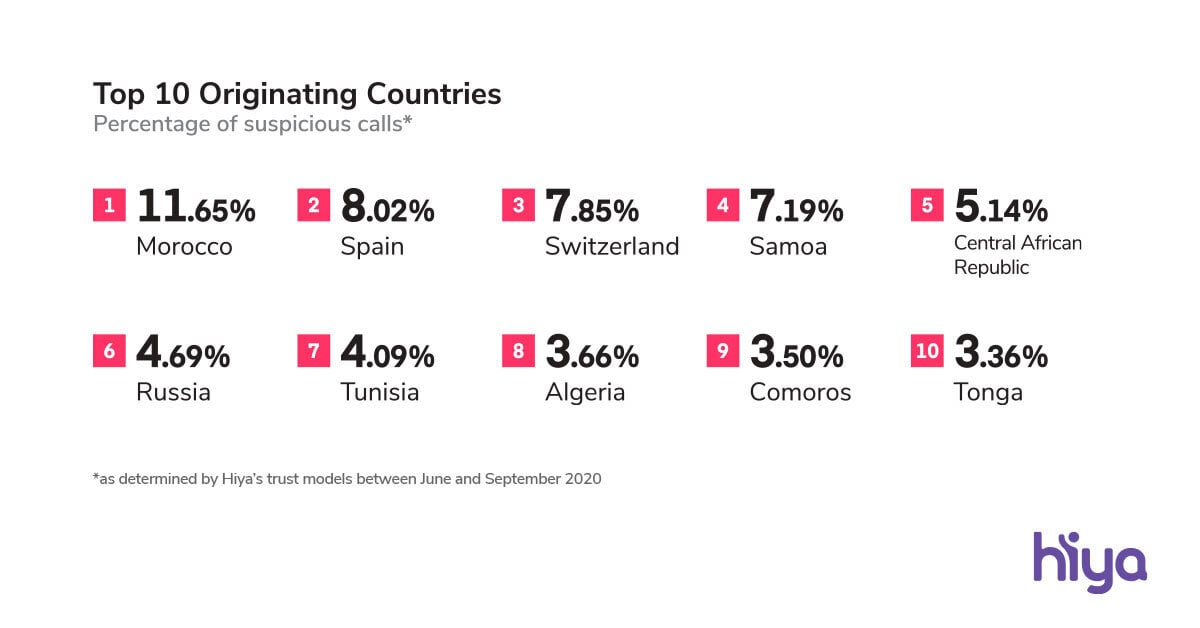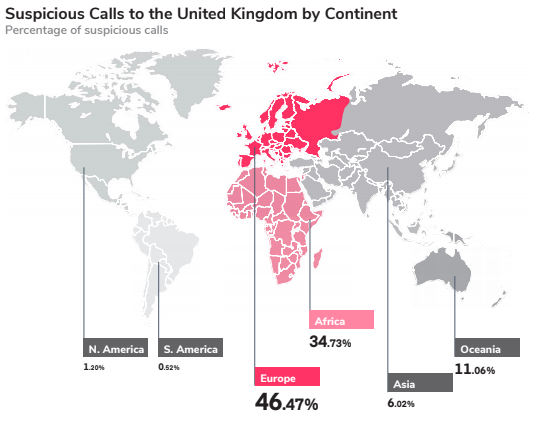
The world’s most prevalent phone scam shows no signs of slowing down. In fact, the popular Wangiri scam is expanding throughout Europe and evolving to become even more difficult to detect and stop. That’s why our research team recently dug into the data, tracked emerging trends and provided fresh insights in our recent Wangiri Scam Report.
What Is Wangiri?
Here’s how the Wangiri scam works:
- Step 1: The scammer calls the victim, lets the phone ring once, and hangs up.
- Step 2: The victim notices a missed call, calls the scammer back and stays on the line while hold music plays, a story is told, or a prize is promised.
- Step 3: The victim gets charged for unknowingly calling a premium rate number and the scammer collects their share of the premium rate fee.
The Wangiri scam remains so popular because it’s simple, successful, and low risk to the scammer. But in the end, victims and telcos are the ones left paying the price.
Key findings from our report
Our research team analyzed more than two million suspicious calls placed to Europe’s five largest countries (United Kingdom, Germany, Spain, France and Italy) between June 3-September 1, 2020. In our analysis, we found several surprising trends:
- Despite the common perception that these scam calls come from far away, a surprising portion come from neighbouring countries. Two European countries, Spain and Switzerland, account for 15% of all suspicious calls during this time period.
- While 80% of the attacks came from just 20 countries, a total of 176 different countries originated calls suspected to be the Wangiri scam, showing the impressive internationalisation of phone fraud.
- All five countries analysed saw major single day spikes on June 10, June 29 and July 13, while also showing smaller attacks on a daily basis, proving that these scammers are constantly targeting victims. A total of 1982 attacks were recorded in the 90 days.

The call is coming from inside the house!
Perhaps most surprising of these trends are the amount of calls that originate from neighboring European countries. Not only did Spain and Switzerland take two of the top three spots, but European countries were consistently among the top originating countries.
Take the United Kingdom, for example. A total of 17% of all suspicious calls to the UK during this period came from Switzerland and a total of 46% of suspicious calls came from Europe. That’s an astonishingly high number of suspicious calls that originated within Europe, which makes these scams even harder for telcos and consumers to detect.

How can we stop these scammers?
Stopping international scams like Wangiri is extremely challenging. As you can see, scammers use tactics like calling from neighboring countries and adjusting the volume of scam calls to avoid detection from telcos. The current approach is to wait until a single phone number makes a massive amount of calls on the network, then block that number.
But there is a better way. At Hiya, we take an international approach to solving international scams like Wangiri. Hiya detects these scams in real-time across borders and across networks thanks to our international partners and more than 150M users worldwide. Our machine learning trust models detect suspicious calling behaviors and our integration with global carriers and device manufacturers enables us to flag and even automatically block these fraud calls from reaching the user’s phone. This type of global, always-on approach is critical to rooting out the bad actors and keeping people protected on the voice network.
Interested in learning more? Read the full report here or visit www.hiya.com/products/protect. 



